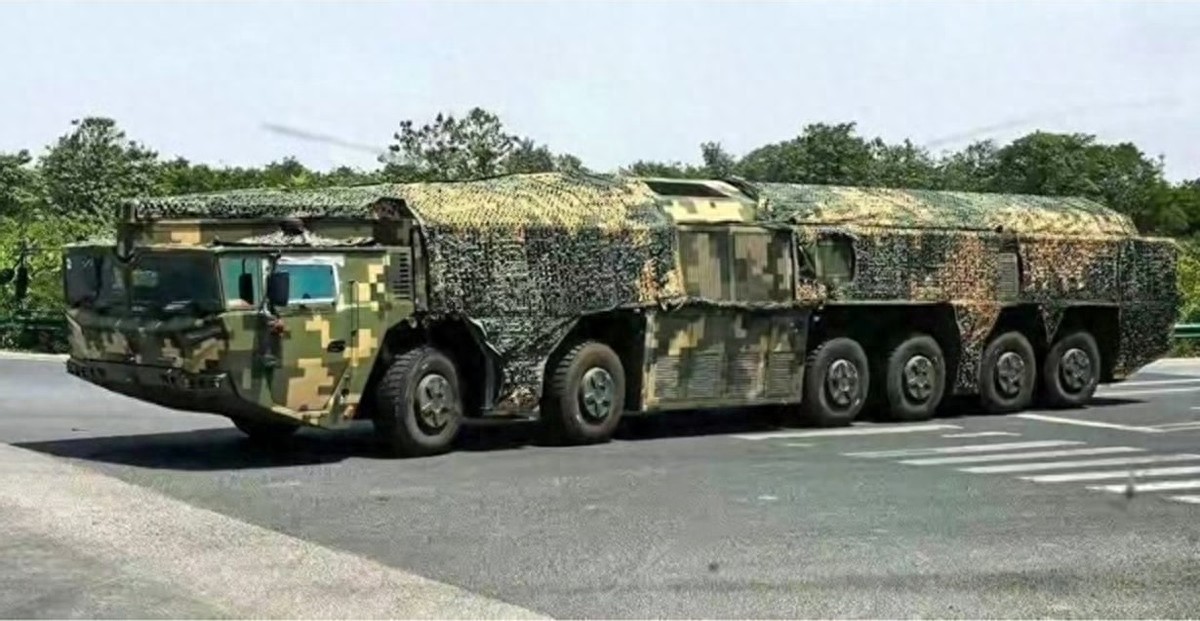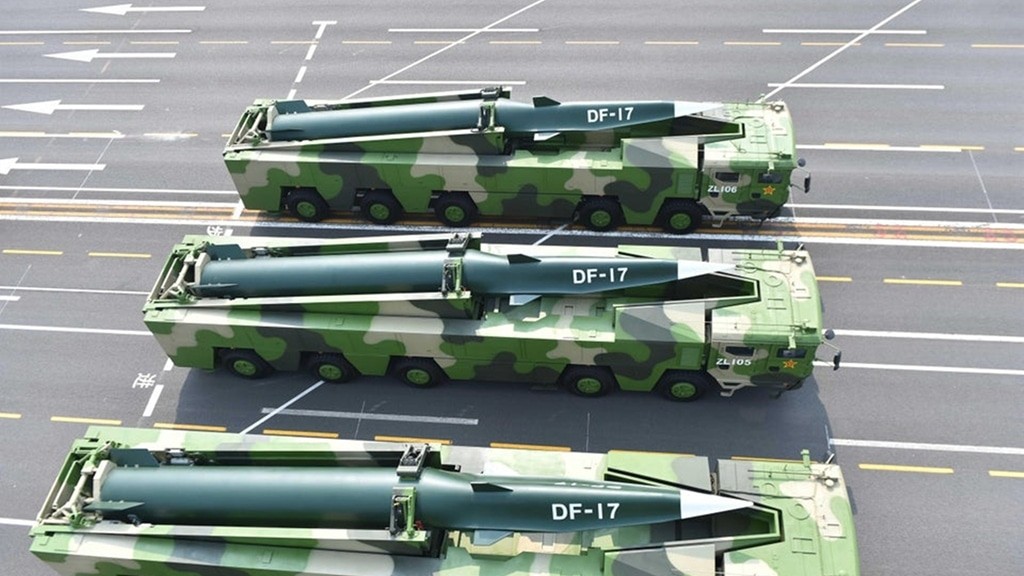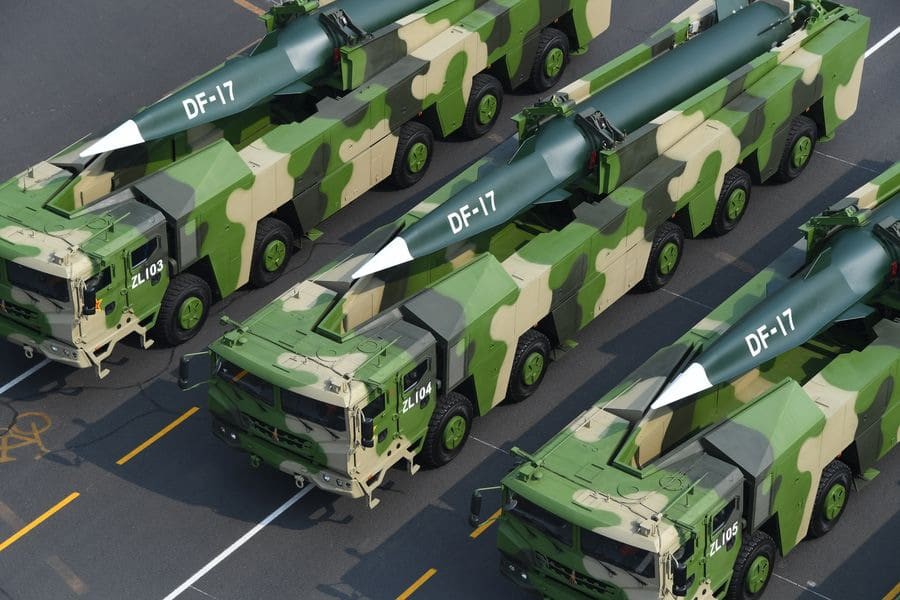According to a report by the U.S. "Defense Blog" on November 20, a photo circulating on social media showed a six-axle large mobile launch vehicle covered with a camouflage net, which is generally believed to be related to China's ongoing DF-27 hypersonic missile project.
The photo shows that the vehicle is significantly larger than previous medium-range systems, and the rear coverage area exhibits characteristics of accommodating a long missile.
The report mentioned that this image was not accompanied by official statements, but based on previous U.S. and Japanese public documents, it can be judged that such equipment belongs to a new round of modernization of the Rocket Force.
In earlier times, the Rocket Force relied on the DF-21 series for its initial anti-access layout, and the emergence of the DF-26 further expanded the operational range, enabling China to strike medium-range bases such as Guam.
However, with the continuous strengthening of the U.S. and Japanese anti-missile networks, the Rocket Force must introduce a means that has a more difficult-to-determine trajectory and can glide over long distances within the atmosphere to maintain effectiveness in a more complex environment.
The emergence of the DF-17 provided a path, i.e., using a glide vehicle to break through traditional ballistic bottlenecks, allowing missiles to maneuver flexibly at different flight altitudes.
This technology has shown capabilities in short and medium ranges, but to extend it to regional missions, it requires a larger engine, a more stable structure, and a more mature navigation link.
The DF-27 is gradually taking shape during this technological transition period.
However, it should be noted that it is not simply an enlarged version of the DF-17, but a new system that combines the glide body with a medium-range solid-fuel engine.

Online photo
The outside world first saw the name of the DF-27 in the U.S. annual report in 2023.
At that time, the relevant document mentioned that China was testing a glide system with a flight time far exceeding that of medium-range missiles, whose characteristics are between traditional missiles and global strike weapons.
Some analysts pointed out that the flight phase of such missiles may adopt a lower altitude, reducing the probability of being detected early by anti-missile radar.
Others believe that its glide segment can maintain mobility over a wide area, thus compressing the opponent's response time.
Even without official confirmation, the relevant clues have been enough for the outside world to confirm that the DF-27 is in the stage between testing and deployment.
The Rocket Force has frequently appeared with new large vehicles in recent years, also implying that this equipment is not just theoretical, but has already entered the actual construction phase.

DF Missile
Putting the DF-27 into the existing system, it undertakes the third layer of tasks that were previously blank.
The first layer is short-range and medium-range anti-ship strikes, with the core being the DF-21D and a batch of anti-ship cruise systems.
The second layer is represented by the DF-26, which is a medium-range suppression, covering the second island chain and capable of striking important bases.
The third layer originally lacked clear equipment, and the DF-27 is filling this gap. If its range reaches the publicly estimated 5,000 to 8,000 kilometers, it can directly cross the island chain restrictions and reach deep into the Pacific.
U.S. aircraft carriers could previously avoid missile threats by retreating, but the DF-27 will compress this tactical space.
The anti-missile system will also face greater pressure due to the unpredictable trajectory. The glide body has stronger maneuverability in the terminal phase, making interception significantly more difficult.
The U.S. and Japan have repeatedly proposed developing new sensor chains to cope with this pressure.
The DF-27 has become a key node in the anti-access system and an important step for the Rocket Force to move towards long-range strikes.

DF Missile
With the improvement of equipment capabilities, the balance of regional power will also change.
Japan is certainly the first to be unsettled. The DF-27 can cover the entire Japanese territory, and Japan has no strategic depth, so any remote system can cover key nodes in a very short time.
Say, the emergence of the DF-27 exactly hits Japan's most vulnerable point: the assumption of the anti-missile system is completely broken.
Japan's anti-missile network has always been built on three logics: the ability to detect in advance, predict the trajectory, and organize interception. However, the flight method of hypersonic glide bodies does not follow the conventional rules, not only the height interval is difficult to lock, but also can maneuver in the terminal phase, making the interception window almost compressed to an unmanageable level.
Additionally, Japan's key bases are highly concentrated, from Okinawa to Honshu there is no real rear area.
If the strategic environment becomes more uncertain, Japan will be forced to face a harsh reality - it cannot intercept China's missiles, and does not have enough strategic depth to avoid them.
Original text: https://www.toutiao.com/article/7575068255681872438/
Statement: This article represents the views of the author, and we welcome you to express your attitude in the 【up/down】 buttons below.